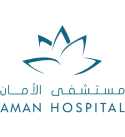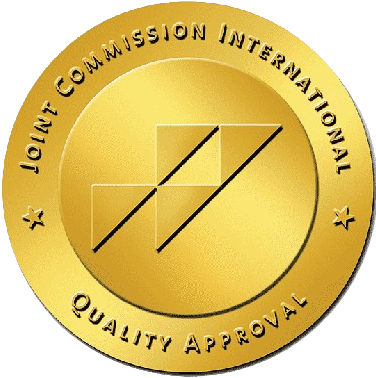Overview
Aman Hospital Audiology Clinic is dedicated to providing quality Hearing and Balance care services through meticulous evaluations to determine the proper diagnosis and to recommend, with the help of the physician, the right rehabilitative and support services.
Services Provided
As part of the universal hearing screening, the newborn hearing screening will be offered to all newborns delivered at Aman Hospital. This test is recommended to be done before the infant reaches 1 month of age. It is a simple painless hearing screening done for all newborns to determine if they have adequate hearing levels for speech and language development. It requires placing an earphone that will present tones to the infants’ ears while they sleep, then an automated analysis will show the result. Test duration varies depending on the infant’s arousal state and can be as quick as ten minutes.
This test is done to identify individuals that have a hearing disorder, impairment, and/or disability. It is a painless test that varies in duration depending on the age of the individual but usually takes no longer than 15-30 minutes. Screening is important in children that have risk factors associated with hearing loss at birth. In these cases, it is essential to perform routine hearing screening to monitor for the development of worsening hearing since the best results come with early detection.
This test includes one or all the following: Tympanometry, Acoustic Reflex test (AR), Acoustic Reflex Decay test, and Eustachian tube dysfunction test. All these tests are painless, and the testing time can vary from 10-30 minutes, depending on the number of tests performed.
Tympanometry: A probe (that looks like an earphone) will be placed into the ear canal. A tone will be heard, and air will be pushed into the ear varying the air pressure in the ear canal relative to the atmospheric pressure. The test will determine the volume of the ear canal and the movement/ mobility of the eardrum. The test will give valuable information about the middle ear function; fluid in the middle ear or eardrum perforations will be picked up by the test thus explaining the patient’s hearing loss.
Acoustic Reflex Test: A probe (that looks like an earphone) will be placed in the ear canal and a high-intensity sound is delivered. This will test the involuntary reflex of the ear muscles that occurs in response to high-intensity sound stimuli. It doesn’t require any feedback from the patient and can be done for babies and unconscious patients assessing the integrity of the auditory pathways. This test gives insightful information about specific medical conditions such as hearing loss or otosclerosis and could indicate central nervous system pathology.
Acoustic Reflex Decay Test: A probe (that looks like an earphone) will be placed into the ear canal, and a high-intensity sound will be presented for ten seconds in each ear. This test will give valuable information about cranial nerve eight (the vestibulocochlear nerve) and so is used to detect and/or confirm a retro-cochlear pathology.
Eustachian Tube Function Test: A probe (that looks like an earphone) will be placed into the ear canal. The patient will be given instructions during certain intervals of the testing to open and close their mouth, thus opening and closing the Eustachian tube (the communication between the back of the nose and middle ear space) to assess its function. This test will give information about possible Eustachian tube dysfunction that causes ear fullness, frequent ear-popping, or blocked ear sensation.
This is a hearing test done in a sound-isolated booth that will indicate the lowest level of sound the patient is hearing, 50% of the time. It will also give insight into how well the patient can hear and repeat words at a comfortable listening level. The patient will have to place insert earphones or have headphones put on and will need to press a button/raise their hand every time they hear a sound no matter how soft it is. This is commonly known as “the hearing test” most adults are requested to do at the ENT office for hearing loss or tinnitus complaints.
This is extremely helpful for patients suffering from tinnitus. The assessment includes various tests that give information about the patient’s tinnitus, mainly pitch matching and loudness matching to their tinnitus. These will aid in the diagnosis and then management of tinnitus, such as with the use of tinnitus maskers. The timing of the assessment varies from 10-45 minutes and is usually done after an audiometric evaluation has been completed. Assessment is done in a sound-isolated booth and requires the use of insert earphones/headphones. Tinnitus management usually occurs on a follow-up session and takes place in the office. The patient will fill out questionnaires and directive counseling will be provided. Management plans will be individualized and case dependent.
This is a painless hearing evaluation done in a sound-isolated booth for children above the cognitive age of 30 months. This test is done when a hearing loss must be ruled out in a child and/or monitor hearing levels in children with hearing loss. CPA is carried out as a “conditioned” game that involves the child giving feedback using a toy(s) to indicate she/he had heard a sound. Patients are conditioned to respond to low-level sounds, as well as louder sounds. The duration of the testing varies depending on the reliability of the child and can vary from 15-45 minutes.
This is a painless hearing evaluation done in a sound-isolated booth for infants between the cognitive ages of 6-24 months of age. It’s indicated when hearing loss needs to be ruled out for the child and/or to monitor hearing levels in children with a known hearing deficit. VRA detects a conditioned response that involves the child giving feedback by turning his/her head when they hear a sound, even low-level sounds. The duration of the testing varies depending on the reliability of the child but can take 15-45 minutes.
This is the gold standard to detect hearing levels and potential hearing loss in infants and children who cannot complete behavioral audiometric assessments. The test gives ear- and frequency-specific information that is necessary for the diagnosis of the degree, type, and configuration of hearing loss and the need for hearing aids. It is a non-invasive procedure, but sedation is frequently required so the child can sleep; no interaction is required from the patient. The entire procedure ranges from 90 to 180 minutes.
This test will aid in detecting retro-cochlear pathologies in the auditory system and is usually ordered by an ENT physician/neurologist. The patient will be prepped, and electrodes will be placed on his/her forehead and earlobes/mastoid. They will hear tones, and the audiologist will look for waves that will be generated from the cochlea up to the lower brainstem. It requires no input from the patient, they just need to be relaxed and/or sleeping. The duration of our testing can vary from 15-45 minutes.
This test indicates how well the outer hair cells in the cochlea work in response to sound. If you have normal hearing, you will produce OAEs (sounds given off by the inner ear when responding to a sound). If your hearing loss is greater than 25–30 decibels (dB), you will not produce these very soft sounds. This test is performed as part of the audiological test battery for children, patients with tinnitus, and patients taking ototoxic medications. It’s a painless test that takes 10-30 minutes, and no input is required from the patient.
The test battery is essential for monitoring the hearing of patients undergoing/taking ototoxic treatments/medication, such as chemotherapy. It includes immittance testing, conventional and high-frequency audiometry, and diagnostic OAE. The test battery can also be used to monitor hearing in patients with continuous exposure to toxic environmental chemicals and/or excessive noise exposure. The duration of the testing varies between 60-75 minutes.
Videonystagmography: This test plays an essential role in determining if the vestibular disorder is peripheral in origin (ear-related) or central (brain-related). After scheduling the appointment, the patient is given specific instructions pre-test day. The process consists of a series of small tests that involve the patient sitting in a special chair and putting on goggles that will detect very fine abnormal eye movements in response to certain head movements and ear canal stimulations. The timing of the test is usually around 30-90 minutes and is very well tolerated.
Vestibular Evoked Myogenic Potential (VEMP): There are two types of VEMP: cervical VEMP and ocular VEMP. Both tests are evoked potentials that give invaluable information about specific areas in the vestibular system. Testing time is 30-45 minutes for each of the painless tests.
Hearing Aid Selection and Fitting: The patient is referred for hearing aid use by the ENT physician. Depending on the audiogram and patient needs/lifestyle, the audiologist will recommend how many hearing aid(s) are needed, along with the type, style, and technology level of the hearing aid. Hearing aid accessories will also be considered and discussed. The timing of the selection session is usually 15-30 minutes.
The first fitting is scheduled after the hearing aid selection session is done. The patient will be given a hearing aid that is uniquely fine-tuned according to his/ her audiogram. Few simple and quick tests are done while the hearing aid is in the patient’s ear to maximize comfort and ensure patient satisfaction. The patient is then taught how to wear and care for the hearing aid. Hearing aid accessory usage can also be taught in this session, when applicable. This session usually takes around 30-45 minutes. A follow-up appointment is scheduled for 2 weeks after.
Hearing Aid Follow-Up: The hearing aid(s) will be fine-tuned according to the patient experience, and necessary changes are made during follow-up sessions. At this point, the patient is taught how to use certain accessories, if not already done during the first session. The second follow-up and aided audiometric evaluation are done in the sound-isolated booth with the patient using his hearing aids, to assess their added benefit and to check for possible needed adjustments. Follow-up scheduling will be discussed with the audiologist to best cater to patient needs. The duration of these sessions lasts 10-30 minutes.
This can be a fitting or follow-up hearing aid session that may occur remotely when in-person visits are not possible. In-situ audiometry through the hearing aids is an available option, as well as virtual fine-tuning of hearing aid(s). The timing of the sessions can vary from 10-30 minutes depending on the case.
Diseases & Conditions Treated
- Hearing loss in adults
- Newborn hearing screening
- Hearing loss in Children
- Dizziness and Balance disorders
Meet The Specialists
FAQs
- Qatar ID / valid passport
- Insurance card
- Laboratory studies (in case available)
For insurance and price inquiries, please contact our call center at +974 4400 4400 between 8 am to 10 pm.
The Audiology Clinic at Aman Hospital is located at the following address: Ground Floor, Outpatient 2.
We recommend you allow enough time to park to ensure you arrive on time. Please plan to arrive 30 minutes prior to your appointment time. Our valet parking is here to assist you, take your car and park it safely in our underground parking.
Always feel free to bring someone with you to your appointments. A family member or friend can help ask questions, remember the information your care team gives you, and provide support.
Please call our call center at +974 4400 4400. They are available from Saturday to Thursday from 8 am to 10 pm to help you reschedule or cancel your appointment.
Our Support Services
- Specialized physical therapist who helps you to improve your joint pain and muscles strength, informs you on the proper ergonomic postures to prevent back pain, and customizes a targeted program that fits your health status. For any inquiry, please contact +974 4400 4400.
- Dietary services will guide you and your family regarding healthier food choices in case of dyslipidemia, diabetes, obesity and hyperuricemia. For any inquiry, please contact +974 4400 4400.
- Pharmaceutical services will guide you regarding your medications and/or biologic treatments: administration mode, timing, side effects, management in case of infection and address any question that may arise. For any inquiry, please contact +974 4400 4400.
- Nursing services for patient education who will provide you with all the information about your disease and treatment and answer your questions. For any inquiry, please contact +974 4400 4400.
- Healthcare practitioner who will coordinate all your appointments and make sure to schedule the appointments at your convenience. For any inquiry, please contact +974 4400 4400.
- Financial team who is here to secure your insurance approvals on time and assist you with any financial inquiries. For any inquiry, please contact +974 4400 4400.







